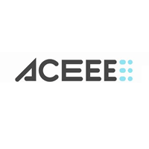 A new report just published by the American Council for an Energy Efficient Economy (ACEEE) highlights that pairing residential heat pump heating and cooling systems with air sealing and insulation will reduce likely increases in customer costs and strain on the electric grid. The report’s message is timely as states prepare to implement two key programs of the Inflation Reduction Act and offer more than $9 billion in rebates for residential energy efficiency and electrification improvements.
A new report just published by the American Council for an Energy Efficient Economy (ACEEE) highlights that pairing residential heat pump heating and cooling systems with air sealing and insulation will reduce likely increases in customer costs and strain on the electric grid. The report’s message is timely as states prepare to implement two key programs of the Inflation Reduction Act and offer more than $9 billion in rebates for residential energy efficiency and electrification improvements.
Why Envelope Improvements with Electrification
According to ACEEE’s report, modest improvements to the building envelope, such as air sealing and increased attic insulation, could reduce building energy costs by 10 to 18 percent. Deep energy retrofits, which include such activities as adding insulation to walls, basements, and rim joists, as well as installing new high-efficiency windows, could net energy savings of up to 33 percent.
As electrification efforts build across the nation, ACEEE encourages energy efficiency programs to bundle building envelope and electrification measures together to achieve the best results, particularly in existing buildings that are poorly weatherized. These buildings are frequently occupied by low-income homeowners, who spend a disproportionate amount of their income on energy costs.
The average consumer who weatherizes an electrified home can save anywhere from $150 - $1,200 per year, with most saving $500 - $800 annually. Additionally, such buildings could help reduce peak electricity load demand for utilities by 7-10 percent. This is, by and large, the most effective energy efficiency measure to reduce greenhouse gas emissions and aid electric reliability during extreme heat waves or cold snaps.
A Nationwide Push
Scaling envelope improvements nationwide is both a challenge and an opportunity for the workforce. Though a massive effort is required, thousands of new contractors could be trained, creating the added benefit of boosting the economy.
“When you pair the environmental benefits, energy use reduction, and job creation opportunities available by combining envelope improvements with electrification, this is an overwhelmingly advantageous undertaking that should be a priority as we aim to reduce fossil fuel use and electrify buildings,” said Curt Rich, President and CEO of NAIMA.
The added sweetener to the deal is the availability of the $1,200 25C residential energy efficiency improvement tax credit that is now available to homeowners annually through 2032.
“There could not be a more advantageous time to take action to boost efficiency as buildings nationwide are being electrified,“ Rich added.
To read the full report, click here.





